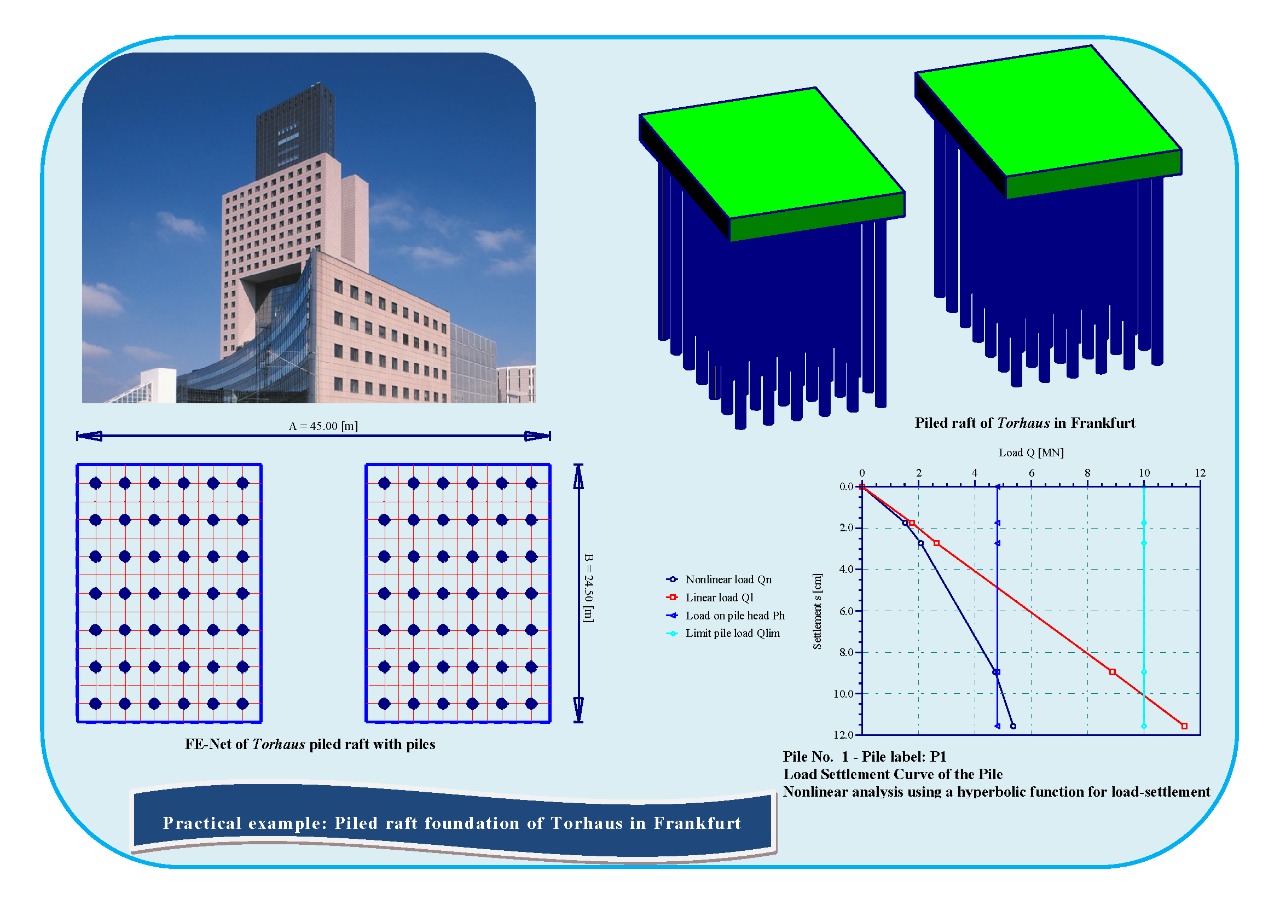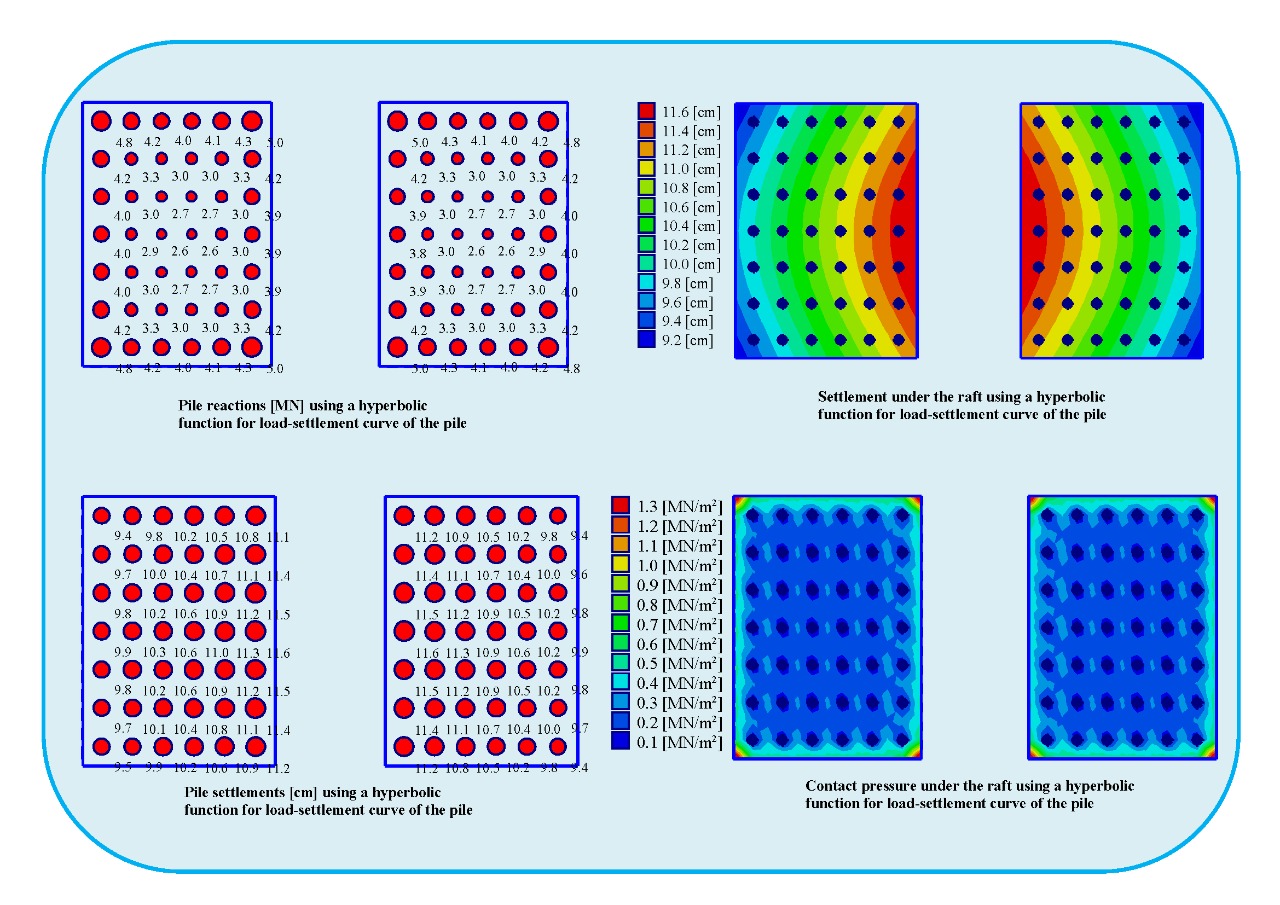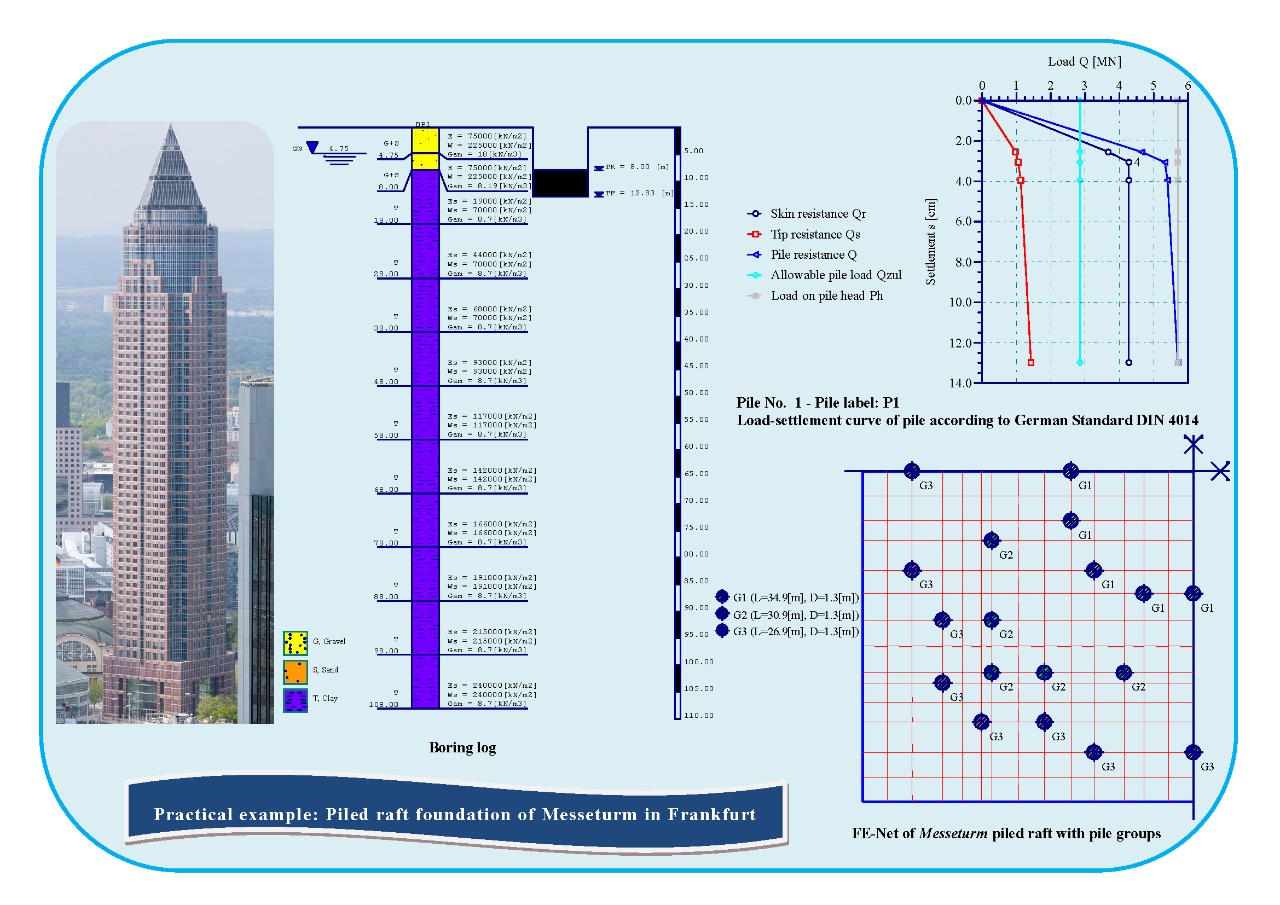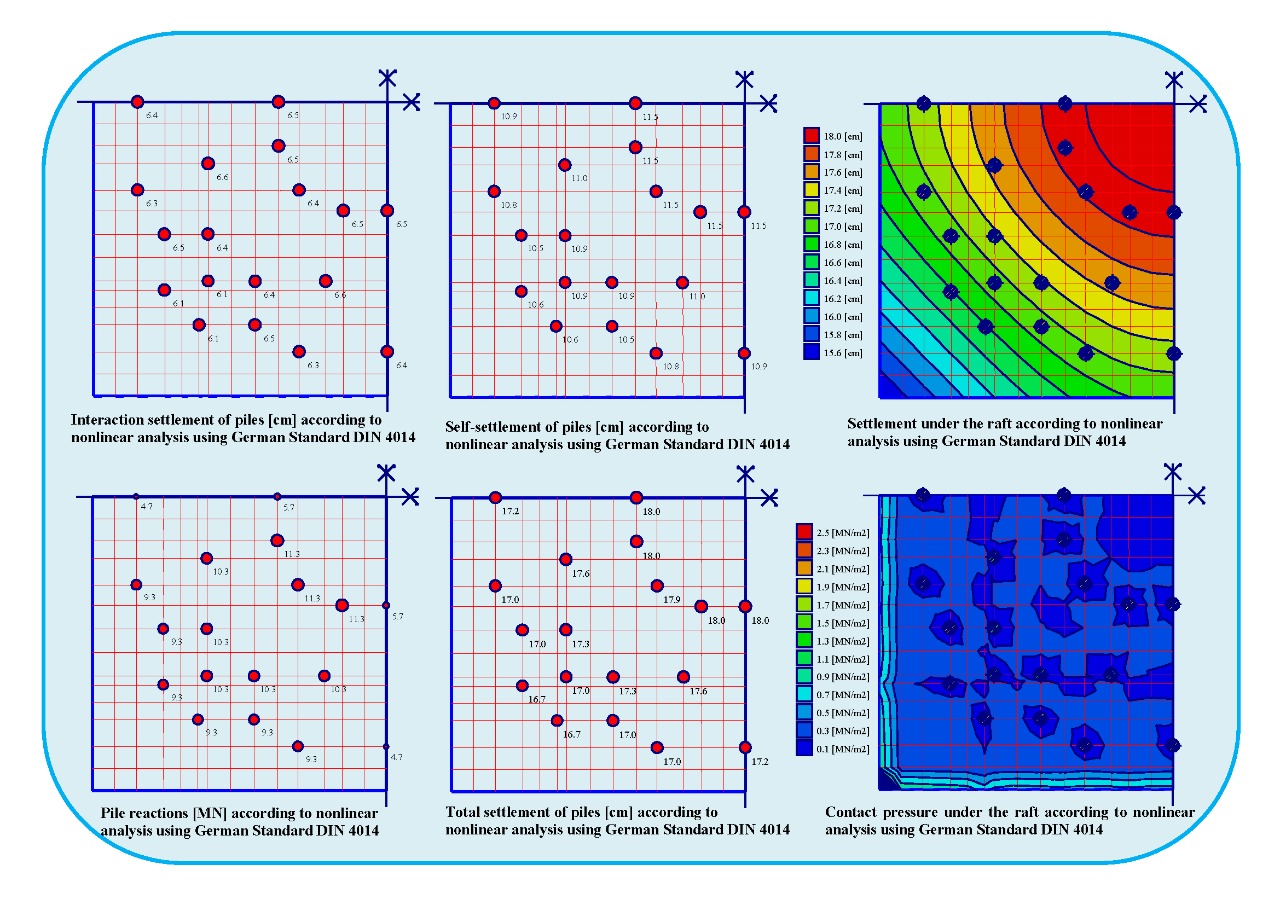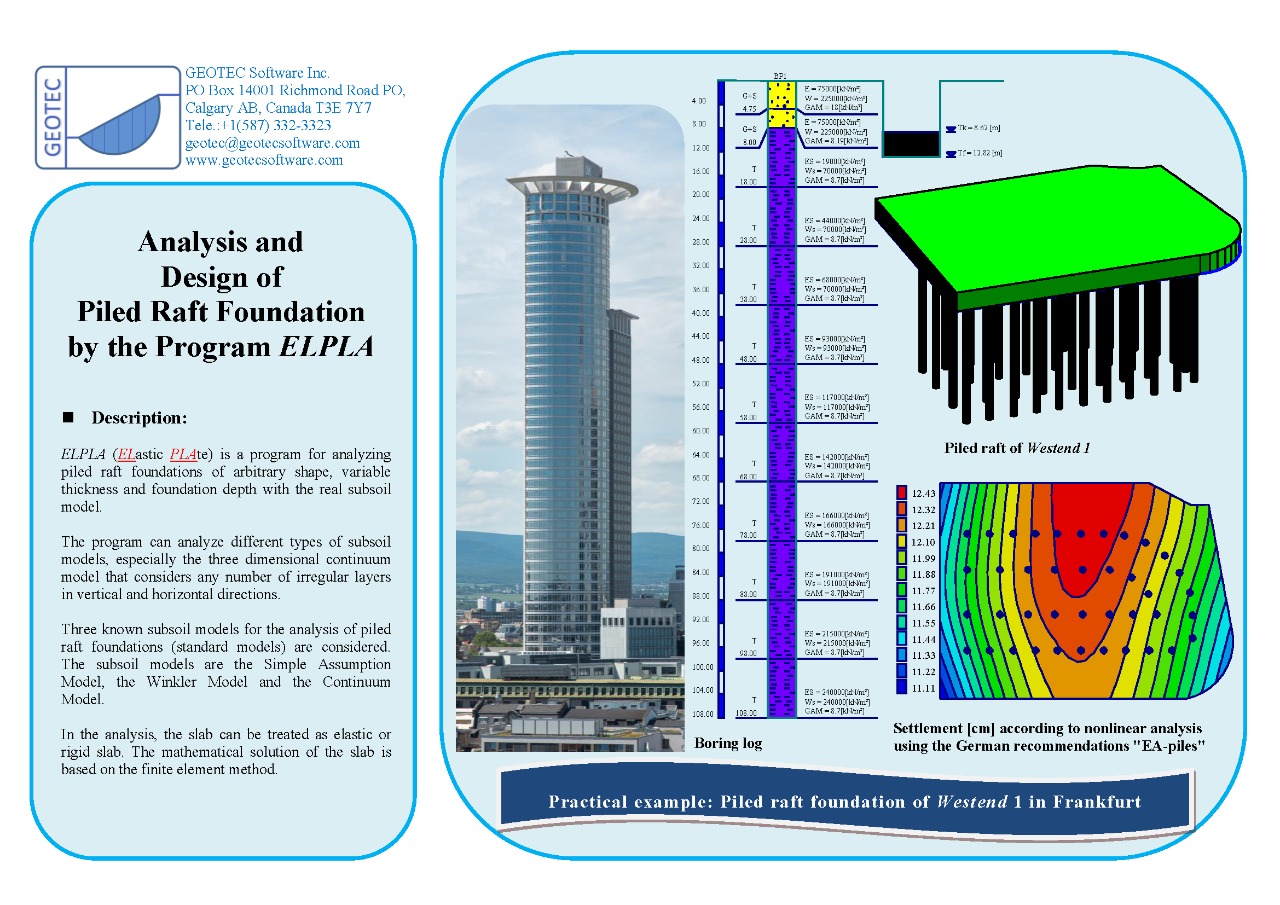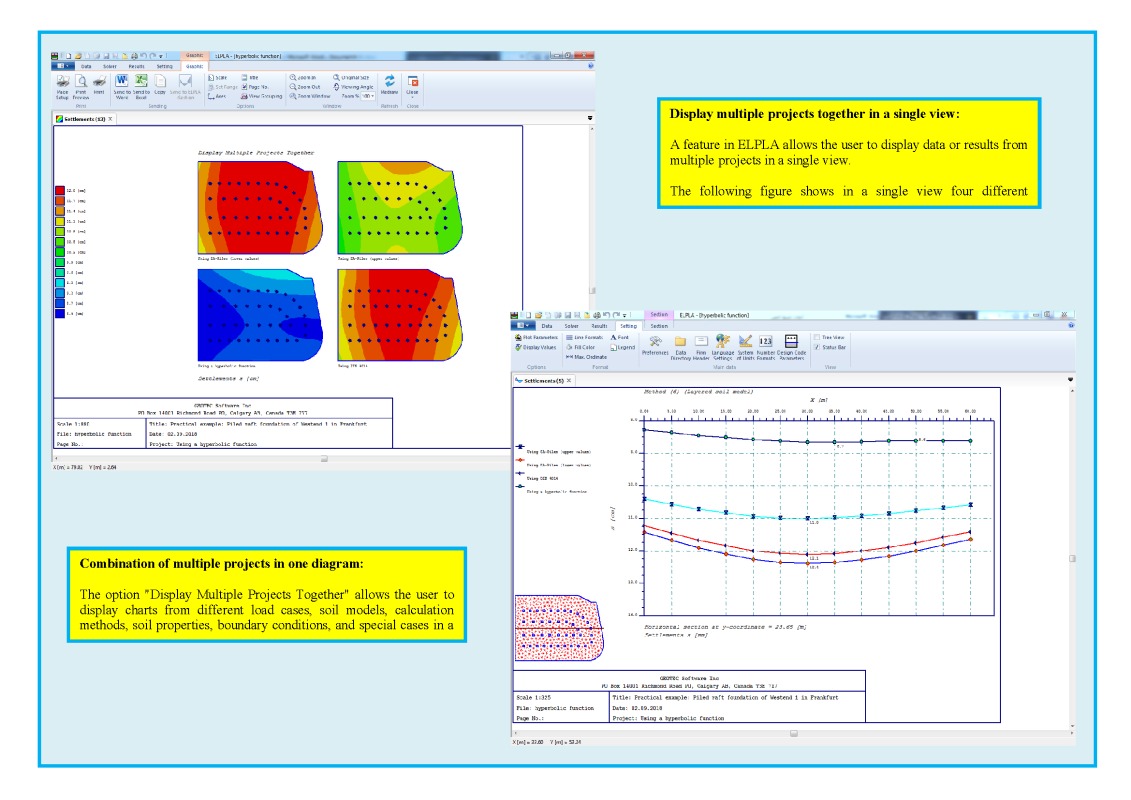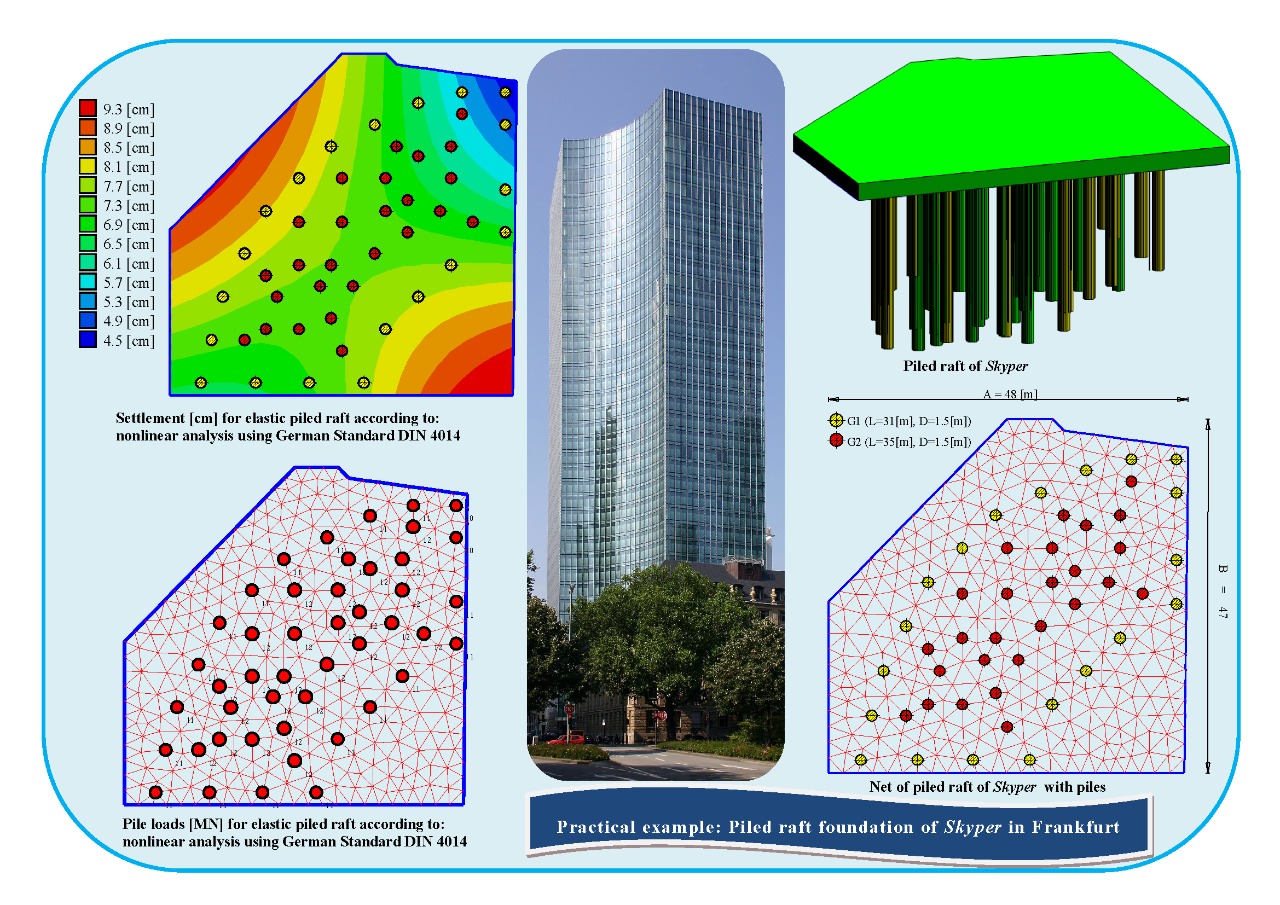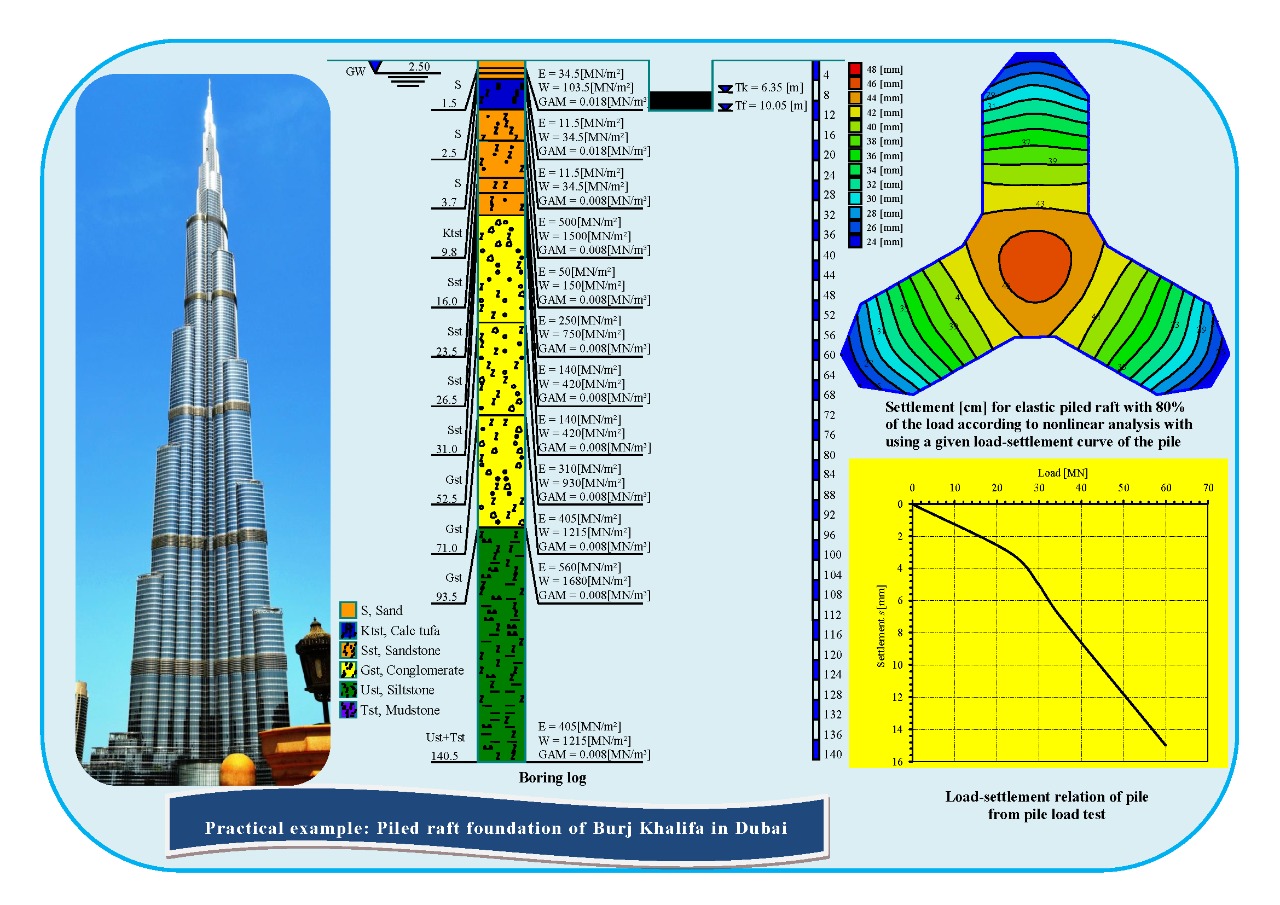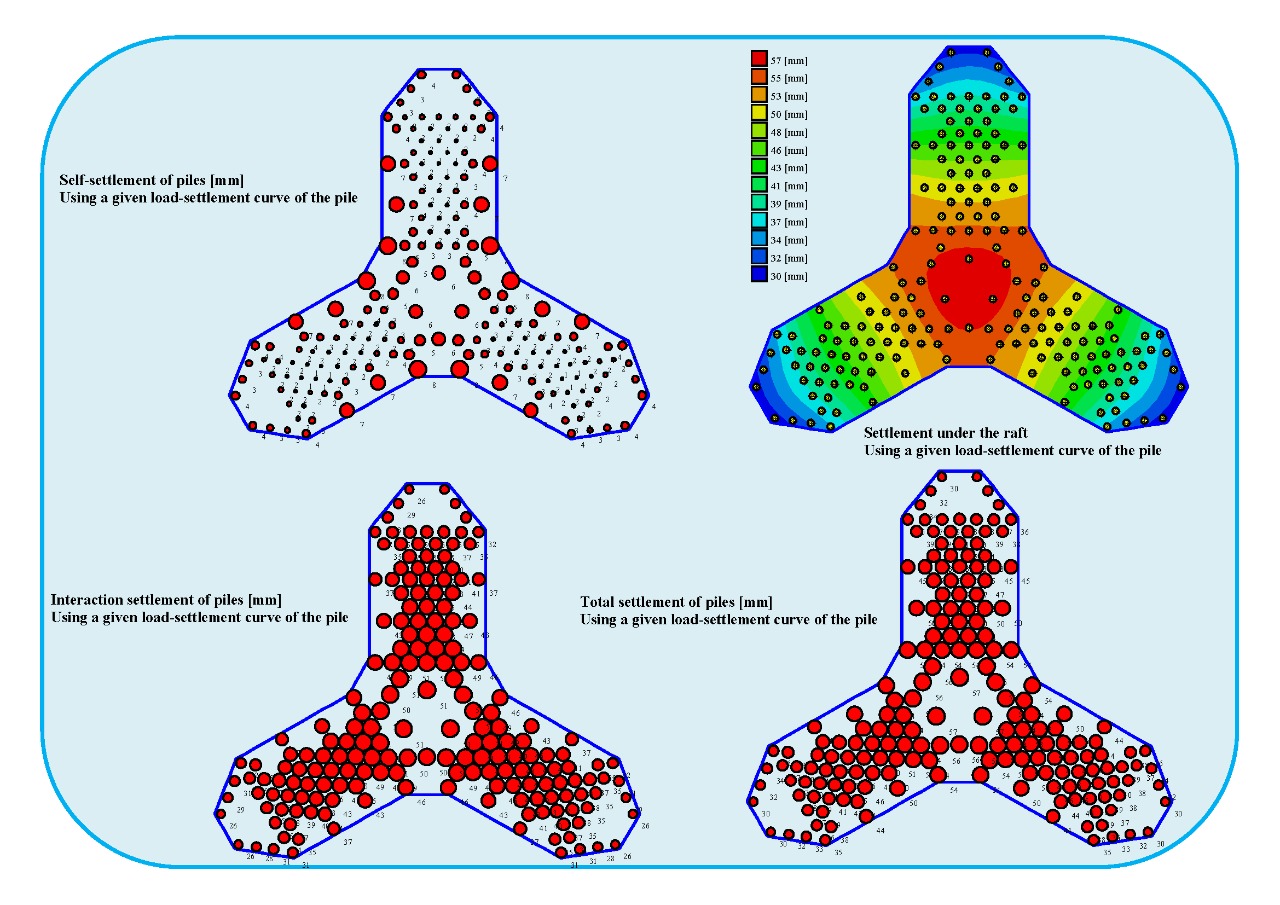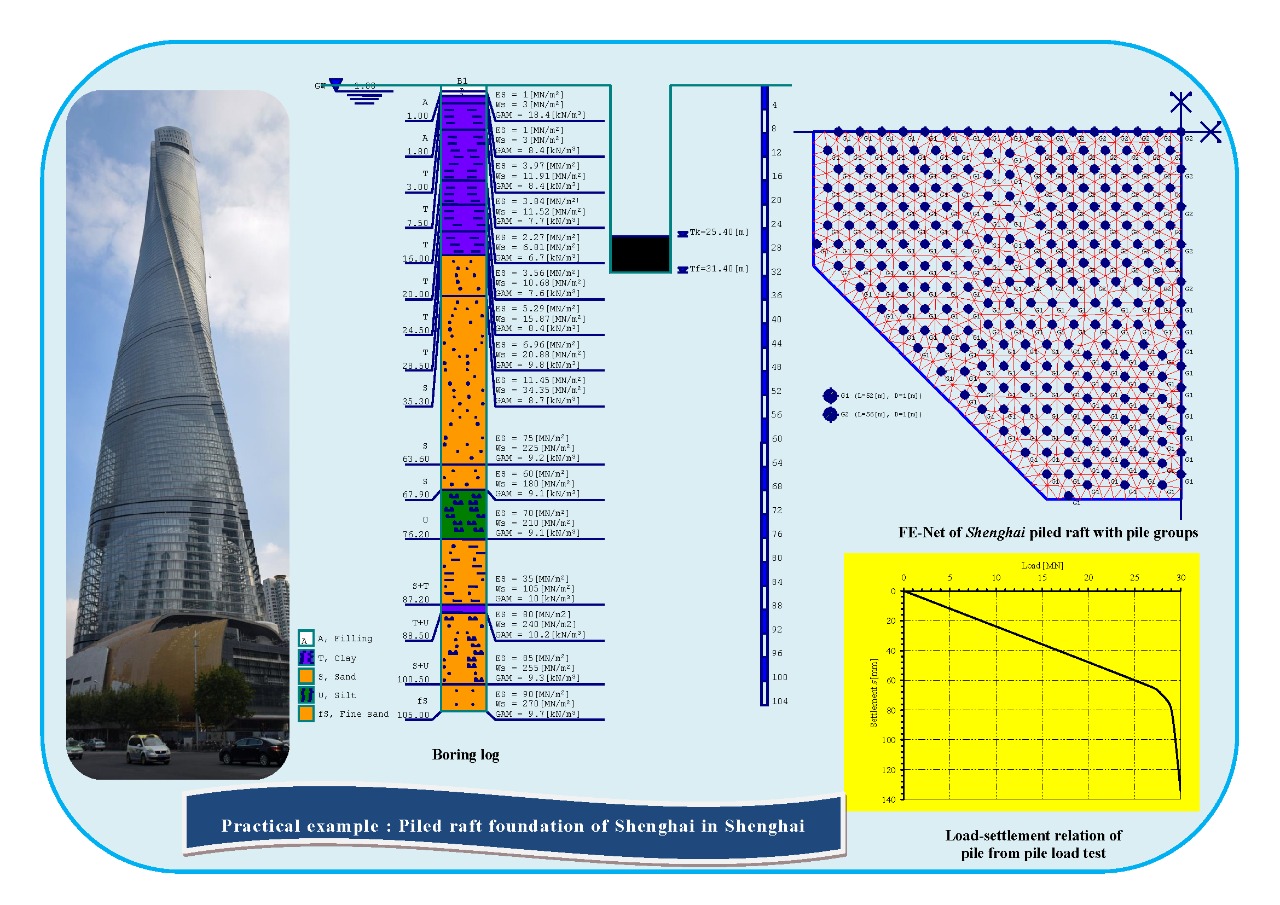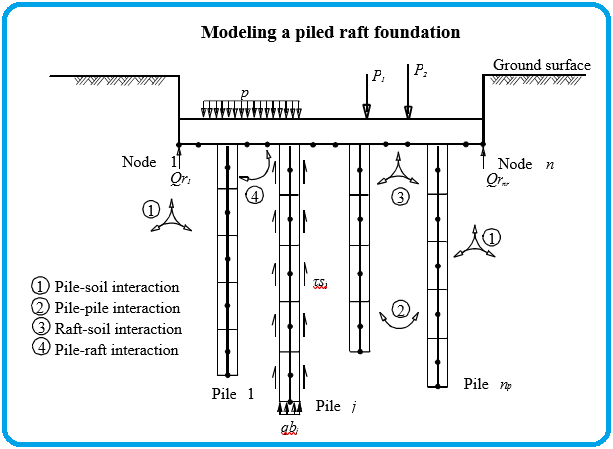
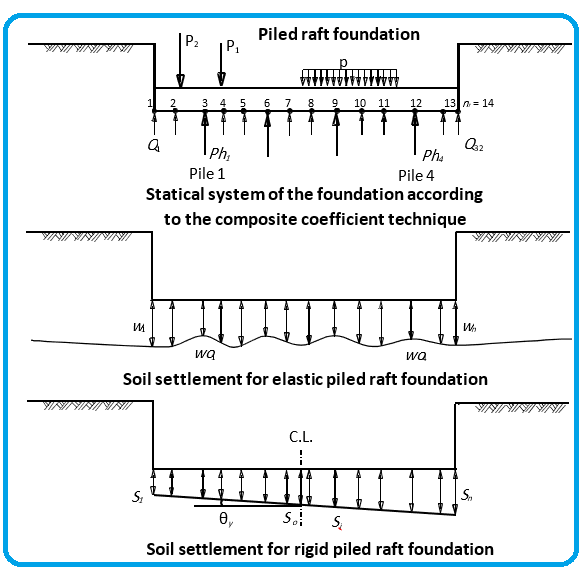
Calculation methods
Multiple models for analyzing piled raft foundations
- A hyperbolic function for the load-settlement curve of the pile
- Using German Standard "DIN 4014" for the load-settlement curve of the pile
- Using German recommendations "EA-Piles" for the load-settlement curve of the pile
- A given load-settlement curve of the pile
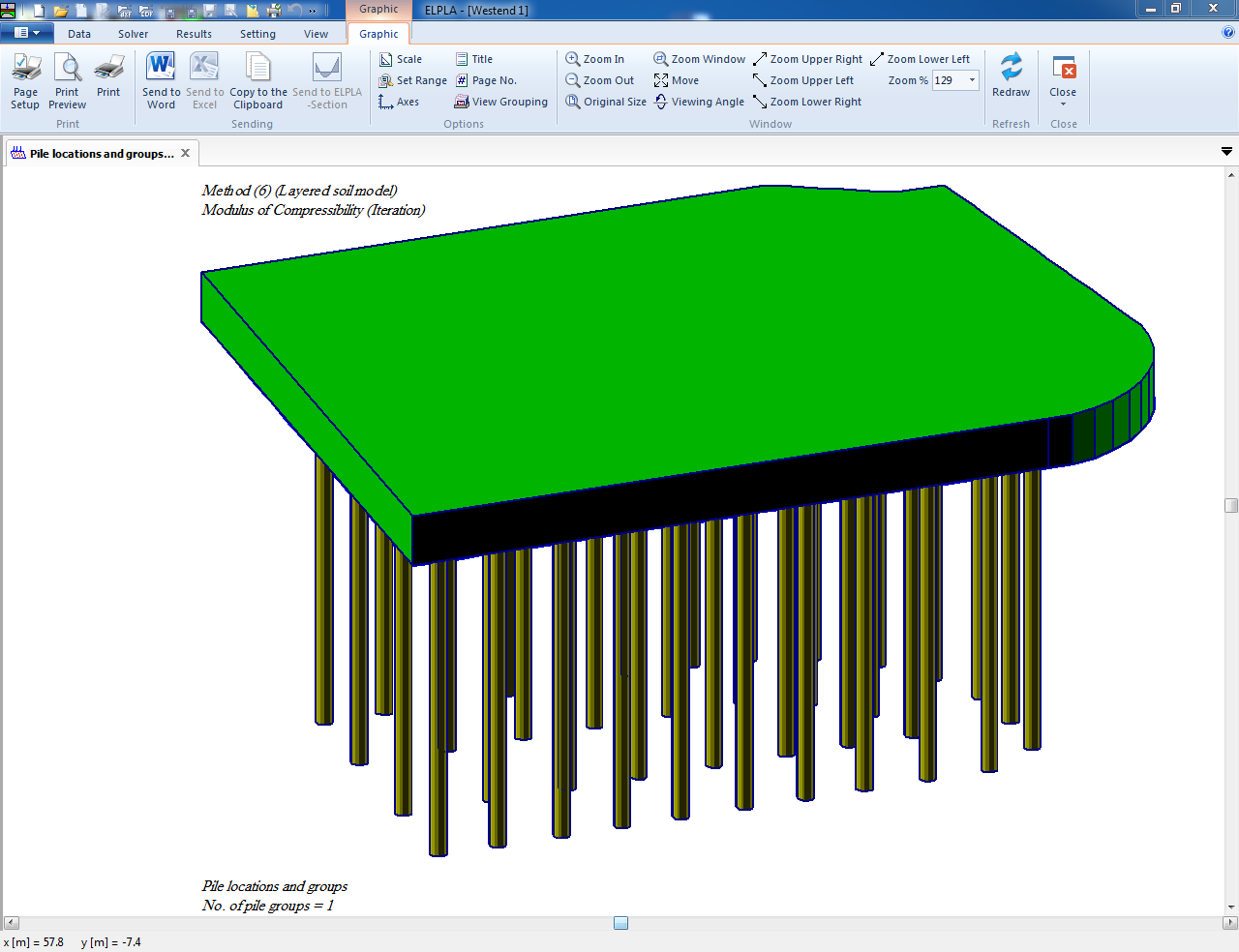
- User interface and help system are available in 3 languages: English, German and Arabic
- Analysis of an elastic or a rigid combined piled raft foundation
- Analysis of a rigid pile group or free-standing raft on a rigid pile group
- Numerical model of soil-structure interaction is under 9 calculation methods
- Design of the raft according to ACI, EC 2, DIN 1045 and ECP
- Generation of the FE mesh of the raft with different element types
- Automatic generation of the FE mesh of the raft
- Powerful mesh generator (for the generation of square, rectangular, circular and annular rafts)
- Beam elements for modeling stiff walls on the raft
- Translational and rotational springs on the raft can be added at nodes
- Elastic or fixed rotations and deflections can be taken into account
- Determining contact pressures, settlements, internal forces, subgrade reactions, reinforcement and pile loads
- Node coordinates and boundary nodes of the FE mesh can be imported from a table via MS Excel
- Arbitrary shape of slabs, holes are also possible
- Variable slab thickness and foundation depth in vertical and horizontal directions
- Consideration of the reduction coefficients α according to DIN 4019 Part 1
- Point loads, line loads, area loads and moments at any position independent of the finite element net
- Polygonal load with variable ordinates and line moment
- Loading and reloading modulus of compressibility are considered
- The soil is defined by a number of borings each boring has multi-layers with different soil material
- Variable thickness and discontinuous soil strata
- Consideration of the variation of the subsoil in the three directions according to three methods
- Drawing soil layers by different symbols and colors according to DIN 4023 for easy identification
- Consideration of groundwater and overburden pressure effects
- Color representation of the dimensions, slab plans and results on the screen or printer
- Presentation of the results as values in the plan, contour lines, circular diagrams
- Drawing results in isometric view
- Distribution of results in plan
- Drawing deformations as deformed mesh
- Principal moments as streaks
- Drawing sections of results from several calculation methods in one view
- Data and results of several projects can be displayed together
- Tabulation of data and final results on the screen or printer
- Results can be saved in an ASCII file
- The drawings can optionally be saved as a WMF file
- There are detailed explanations in the user manual with numerical examples
- Short help information can be requested at any interface location
- Import or export the data to MS Excel
- Export the results and diagrams to MS Excel
- Export the data and results to MS Word
- A group of data with results together in one presentation
- Copying drawings to the clipboard for use in word processors
| Analysis of Piled raft of Torhaus in Frankfurt by ELPLA |
| Torhaus data |
| Analysis Piled raft of Messeturm in Frankfurt by ELPLA |
| Messeturm data |
The building has a basement with three underground floors and 51 stories with an average estimated applied pressure of 412 [kN/m2]. The foundation area is about 2900 [m2] founded on Frankfurt clay at a depth of 14·5 [m] under the ground surface. Raft thickness varies from 4·65 [m] at the middle to 3 [m] at the edge. A total of 40 bored piles, 30 [m] length by 1.3 [m] diameter. Piles are arranged in 2 rings under the heavy columns of the superstructure. The subsoil consists of gravels and sands up to 8 [m] below the ground surface underlay by layers of Frankfurt clay extended to more than 100 [m] below the ground surface. The groundwater level lies at 4.75 [m] under the ground surface.
| Analysis of Piled raft of Westend 1 in Frankfurt by ELPLA |
| westend1 data |
| Analysis of Piled raft of Skyper in Frankfurt by ELPLA |
| Skyper data |
| Analysis of Piled raft of Burj Khalifa in Dubai by ELPLA |
| Burj Khalifa data |
The tower has a 5-storey basement, and its foundation depth is 31.4 [m]. The thickness of the raft under the tower is 6 [m] and the area of the raft is 8945 [m2]. The raft of Shanghai tower is supported by 955 bored piles with a diameter 1.0 [m]. The spacing between the piles is 3 [m] and the piles are distributed in different foundation arrangements where the entire raft area is divided into four sub areas A, B, C and D . The length of the pile in area A is 56 [m], while the length of the pile in other zones is 52 [m].
| Analysis of Piled raft of Shanghai Tower in Shanghai by ELPLA |
| Shanghai Tower data |


